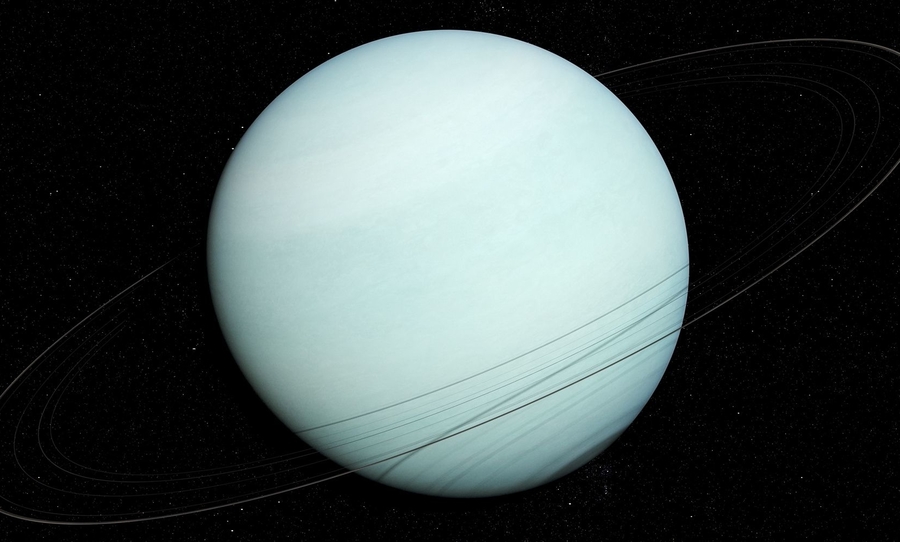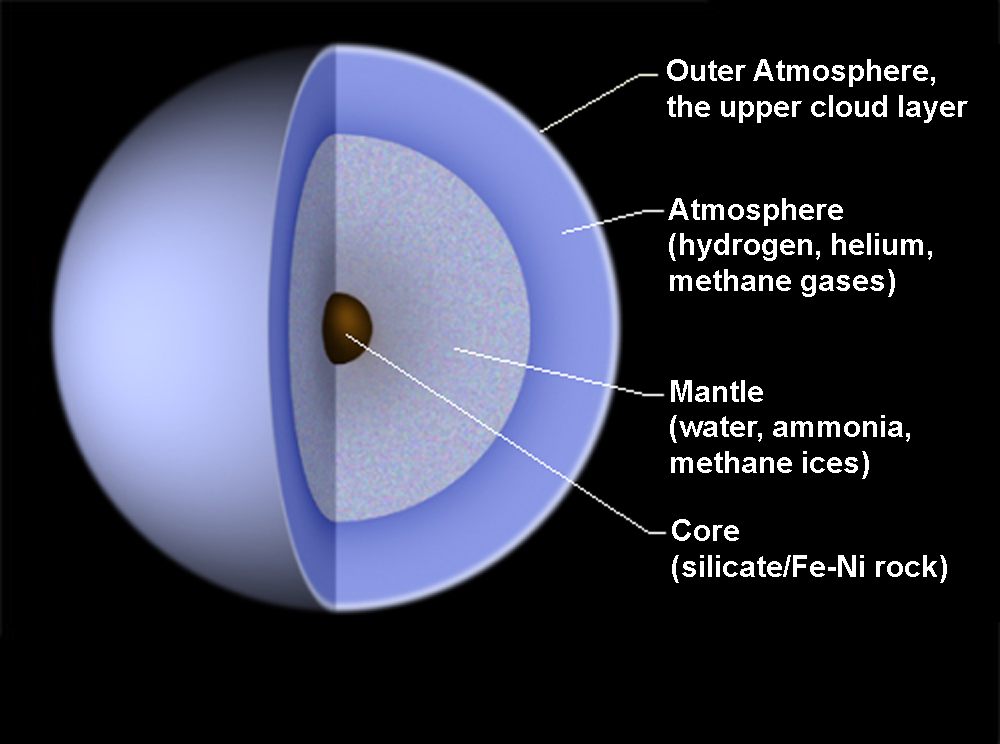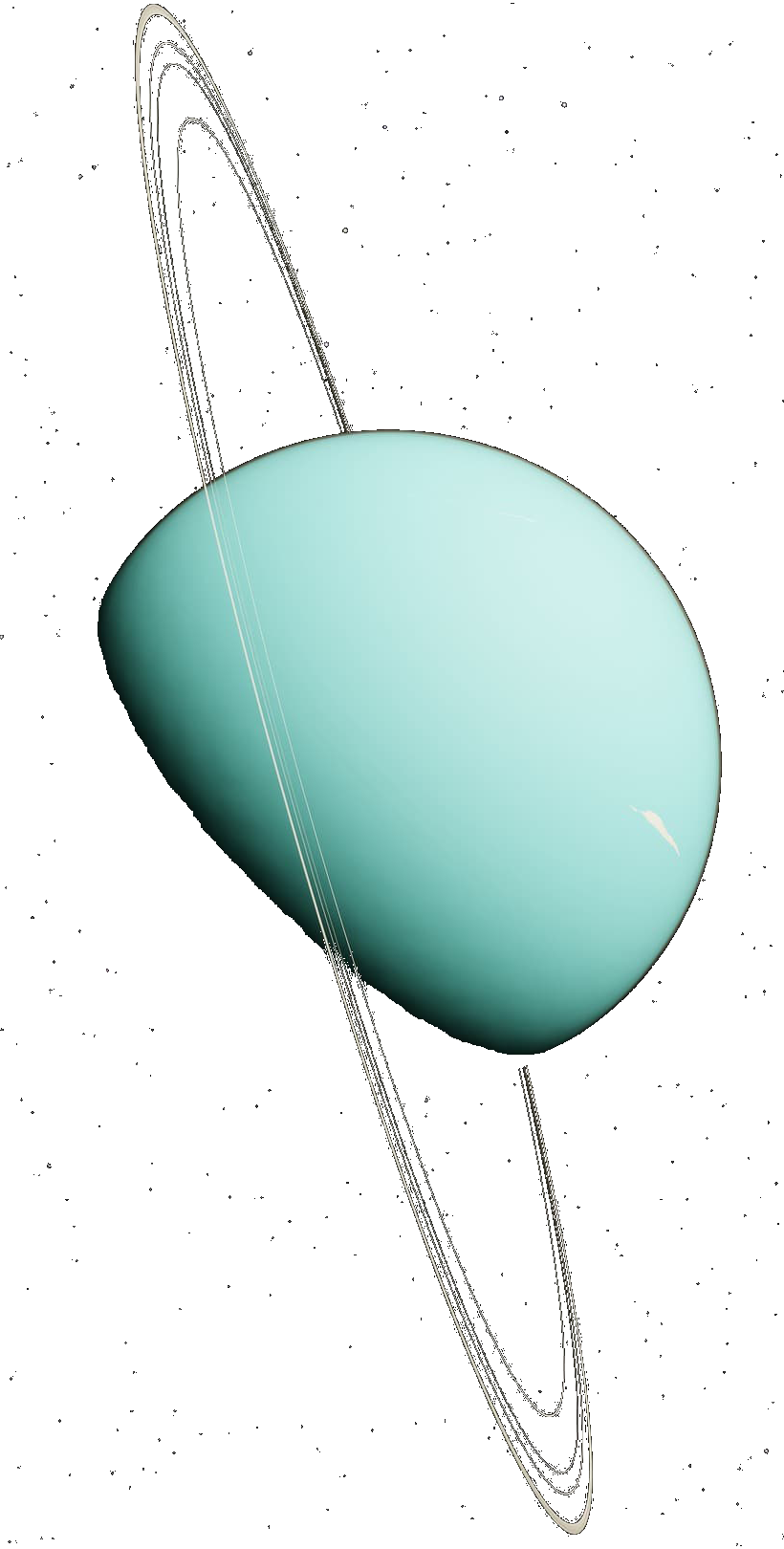
Uranus Planet
The cold icy giant, Uranus. It was only recently discovered in the year 1781. The planet is too dim to have been seen by ancient civilizations such as the Romans or the Greeks. Uranus has a strange way of orbitting the sun, it orbits literally on its side. Scientists believe that the reason this planet orbits in such a lopsided way is because of the many collisions that it suffered during the early formation of our solar system.
Uranus is another planet with extreme seasons, it experiences extreme cold that averages -153 degrees farhenheit to -218 degrees farhenheit. Interestingly enough, the planet can get as hot as it gets cold. Uranus can reach hot temperatures that average 1070 degrees farhenheit. The winds on this icy giant can blow as fast as 560 miles per hour. This type of wind can easily uproot trees, destroy houses, and do a ton of damage here on earth.
Uranus is another planet with extreme seasons, it experiences extreme cold that averages -153 degrees farhenheit to -218 degrees farhenheit. Interestingly enough, the planet can get as hot as it gets cold. Uranus can reach hot temperatures that average 1070 degrees farhenheit. The winds on this icy giant can blow as fast as 560 miles per hour. This type of wind can easily uproot trees, destroy houses, and do a ton of damage here on earth.
Uranus has 27 moons, all of which were named about the characters in the works of William Shakespeare. Most of these moons are a bit irregularly shaped, very small, and have little mass. Scientists believe that most of these planets were formed from the accretion disk around the planet, and other moons were possibly captured by Uranus gravitational pull.
Scientists believe that the core of Uranus possibly accounts around 20% of the planets radius. The core of this planet can reach hot temperatures as high as 5000 kelvin. That is as hot as the surface of the sun. Also, the pressure in this core can reach 8 million bars.
CITATIONS:
Editorial staff, "52 interesting facts about Uranus", November 2019, The Fact File
Benjami Elisha Sawe, "10 interesting facts about Uranus", November 2019, World Atlas
Fraser Cain, "Core of Uranus", October 2008, Universe Today
CITATIONS:
Editorial staff, "52 interesting facts about Uranus", November 2019, The Fact File
Benjami Elisha Sawe, "10 interesting facts about Uranus", November 2019, World Atlas
Fraser Cain, "Core of Uranus", October 2008, Universe Today

Uranus Core
